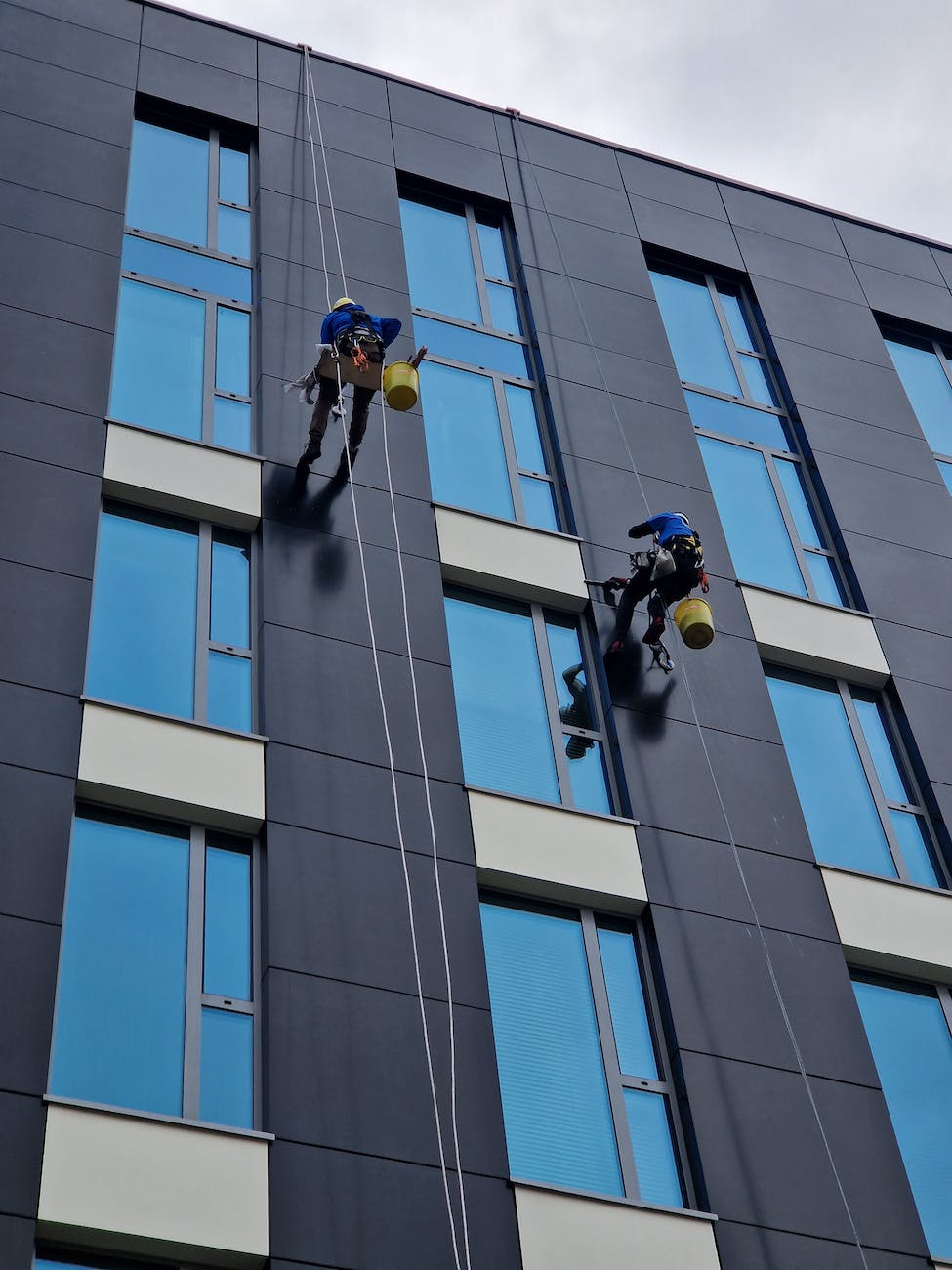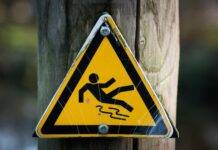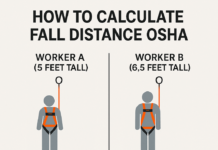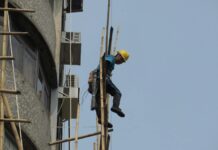
Work at Height Safety: Protecting Lives and Ensuring Productivity
Working at height is an integral part of various industries, enabling essential tasks such as construction, maintenance, and telecommunications. However, it also poses significant risks to workers, making work at height safety a crucial aspect of any organization’s operations. In this article, we will explore the importance of work at height safety and delve into the best practices that help mitigate potential hazards.
1. Introduction
As the demand for tall structures and infrastructure rises, so does the need for work at height. Employees engaged in activities at heights face the risk of falls and other related accidents, making it essential to prioritize their safety.
2. Understanding the Risks of Working at Height
Before delving into safety measures, it is crucial to comprehend the various hazards that employees may encounter while working at height. These risks include falls, falling objects, structural instability, adverse weather conditions, and electrical hazards.
3. The Importance of Work at Height Safety
Ensuring work at height safety is not just about compliance; it is a moral obligation to protect the lives and well-being of workers. Additionally, a safe work environment enhances productivity and promotes employee morale.
4. Essential Safety Measures for Working at Height
4.1 Conducting a Thorough Risk Assessment
Before commencing any work at height, a comprehensive risk assessment must be carried out to identify potential hazards and devise suitable control measures.
4.2 Proper Training and Competency
Employees should receive adequate training to ensure they are competent in using equipment and adhering to safety protocols.
4.3 Selecting the Right Equipment
The appropriate selection of safety equipment, such as harnesses, ladders, and scaffolds, is vital to ensure workers’ safety and efficiency.
4.4 Securing Fall Protection Systems
Implementing reliable fall protection systems, like guardrails and safety nets, can prevent serious injuries and fatalities from falls.
4.5 Implementing Safety Procedures and Protocols
Establishing clear and concise safety procedures is essential to minimize risks and ensure everyone is aware of their responsibilities.
5. Common Work at Height Hazards
5.1 Falls from Heights
Falls from height are one of the most significant risks faced by workers. Proper fall protection systems must be in place to prevent such incidents.
5.2 Falling Objects
Workers below a height-related task are at risk of being struck by falling objects. Ensuring the use of tool lanyards and barricading the area can prevent accidents.
5.3 Structural Instability
Working on unstable structures can lead to disastrous consequences. Regular inspections and maintenance are essential to identify and address issues promptly.
5.4 Weather Conditions
Adverse weather conditions like strong winds or slippery surfaces can increase the risk of accidents. Monitoring weather forecasts is crucial before initiating work at height.
5.5 Electrical Hazards
In industries where work at height involves proximity to power lines, workers must take extra precautions to avoid electrical hazards.
6. Best Practices for Work at Height Safety
6.1 Pre-Work Preparations
Before starting any task at height, a detailed safety briefing should be conducted, and workers must ensure they have the right equipment for the job.
6.2 Safe Use of Ladders and Scaffolds
Workers should be trained on the proper use of ladders and scaffolds, including how to inspect them for defects before use.
6.3 Harness and Fall Arrest Systems
Using harnesses and fall arrest systems correctly can mean the difference between life and death in the event of a fall.
6.4 Regular Inspection and Maintenance
Frequent inspections of safety equipment and structures can help identify potential issues and prevent accidents.
6.5 Emergency Response and Rescue Plans
Having well-defined emergency response and rescue plans in place is crucial for minimizing the impact of accidents and saving lives.
7. The Role of Employers and Employees in Ensuring Safety
7.1 Employer Responsibilities
Employers must prioritize the safety of their workers and provide them with the necessary training, equipment, and support.
7.2 Employee Responsibilities
Employees also have a crucial role to play in ensuring their safety and the safety of their colleagues by following safety protocols and reporting any hazards.
8. Work at Height Safety Training and Certification
8.1 Understanding Work at Height Risks and Precautions
Training programs should focus on educating workers about the risks involved in working at height and the precautions to be taken.
8.2 Proper Usage of Safety Equipment
Proper training should emphasize the correct usage of safety equipment, such as harnesses, lanyards, and helmets. Workers should understand how to inspect their gear for any signs of wear and tear and know when to replace it. Additionally, training sessions should cover how to properly adjust and secure the equipment to ensure maximum effectiveness in the event of a fall.
8.3 Practical Training and Drills
Practical training is essential to prepare workers for real-life scenarios. Regular drills should be conducted to practice using safety equipment, evacuating from heights, and performing rescues. These drills not only enhance skills but also build confidence in handling emergencies, fostering a safety-first mindset.
9. Ensuring Compliance with Regulations and Standards
9.1 OSHA Regulations
In the United States, the Occupational Safety and Health Administration (OSHA) provides guidelines and regulations for work at height safety. Employers must adhere to these regulations to maintain a safe work environment and avoid penalties.
9.2 ANSI/ASSP Standards
The American National Standards Institute (ANSI) and the American Society of Safety Professionals (ASSP) also publish standards related to work at height safety. Following these standards helps ensure that safety practices are in line with industry best practices.
9.3 National and Local Guidelines
Different countries and regions may have specific regulations and guidelines for work at height safety. Employers must familiarize themselves with these requirements to ensure compliance and protect their workers.
10. Work at Height Safety in Specific Industries
10.1 Construction Sector
The construction industry involves significant work at height activities, including building structures, installing roofing, and painting exteriors. Employers in this sector must enforce strict safety protocols, conduct regular safety meetings, and provide workers with proper safety training.
10.2 Telecommunication Industry
Telecommunication workers often need to climb communication towers to install and maintain equipment. Comprehensive training on tower climbing safety, the use of safety harnesses, and rescue procedures is critical in this industry.
10.3 Window Cleaning Services
Window cleaners frequently work at heights, suspended from high-rise buildings. Employers must ensure workers are equipped with appropriate personal protective equipment and fall protection systems to minimize risks.
10.4 Industrial Maintenance
Industrial maintenance workers often encounter work at height situations while conducting repairs and inspections on machinery and structures. Proper risk assessment and safety training are vital in these settings.
10.5 Entertainment and Event Management
The entertainment industry involves staging events and shows at heights, such as concerts and performances. Implementing stringent safety measures and ensuring workers are well-trained is essential to prevent accidents during these events.
11. Promoting a Safety Culture
11.1 Leadership and Safety Advocacy
Creating a safety-oriented workplace starts with leadership. Management should prioritize safety and lead by example, demonstrating a commitment to the well-being of their employees.
11.2 Incentives for Safe Practices
Employers can encourage safe behavior by offering incentives to workers who consistently follow safety protocols. Recognition and rewards can foster a positive safety culture.
11.3 Encouraging Reporting and Learning from Incidents
Workers should be encouraged to report near-misses and incidents without fear of reprisal. By learning from past incidents, employers can implement preventive measures to avoid similar occurrences in the future.
12. The Economic Impact of Work at Height Incidents
12.1 Direct Costs
Work at height accidents can result in medical expenses, compensation claims, and damage to property or equipment. Direct costs of accidents can be substantial and have a significant impact on a company’s finances.
12.2 Indirect Costs
Indirect costs include loss of productivity due to work stoppages, delays in project completion, and increased insurance premiums. These costs can have long-term effects on a company’s profitability.
12.3 Loss of Productivity
Work at height incidents can lead to absenteeism and reduced productivity among workers. A safe work environment helps maintain high levels of productivity and efficiency.
13. Global Initiatives for Work at Height Safety
13.1 Collaborative Efforts and Partnerships
International organizations, governments, and businesses are coming together to share knowledge and resources to improve work at height safety on a global scale.
13.2 Sharing Best Practices
Various platforms and conferences facilitate the exchange of best practices and innovations in work at height safety.
13.3 International Safety Standards
Efforts are underway to establish uniform international safety standards that can guide organizations worldwide in implementing effective work at height safety measures.
14. Technological Advancements in Work at Height Safety
14.1 IoT and Wearable Devices
Internet of Things (IoT) technology and wearable devices are being integrated into safety equipment to monitor worker location, health, and environmental conditions in real-time.
14.2 Drones for Inspection and Monitoring
Drones equipped with cameras and sensors are increasingly being used to conduct inspections of structures at height, reducing the need for manual inspections.
14.3 Virtual Reality Training
Virtual reality (VR) training is becoming popular for simulating work at height scenarios, allowing workers to practice safety procedures in a controlled and safe environment.
Conclusion
Work at height safety is of paramount importance to protect the lives of workers and ensure smooth operations across industries. By adhering to comprehensive safety measures, promoting a safety-first culture, and staying updated with the latest advancements, organizations can create a work environment that prioritizes safety while boosting productivity and success.
FAQs
- Why is work at height safety essential?
Work at height safety is vital to prevent accidents and protect the lives of workers engaged in tasks at heights. It also enhances productivity and fosters a positive work culture.
- What are the common hazards of working at height?
Common hazards include falls from heights, falling objects, structural instability, adverse weather conditions, and electrical hazards.
- How can employers promote work at height safety?
Employers can promote safety by providing adequate training, appropriate safety equipment, and incentivizing safe practices.
- Are there international standards for work at height safety?
Efforts are being made to establish international safety standards to guide organizations worldwide in implementing effective safety measures.
- How are technological advancements improving work at height safety?
Technological advancements like IoT, wearable devices, drones, and virtual reality training are enhancing safety measures and reducing risks for workers at height.

























I like that you pointed out how work-at-height safety is vital to prevent accidents and protect the lives of workers engaged in tasks at heights. I was looking into some job descriptions earlier and I saw some jobs that work at heights. According to what I’ve heard before, it seems height safety equipment inspection is actually very important for this kind of job.
Appreciate!